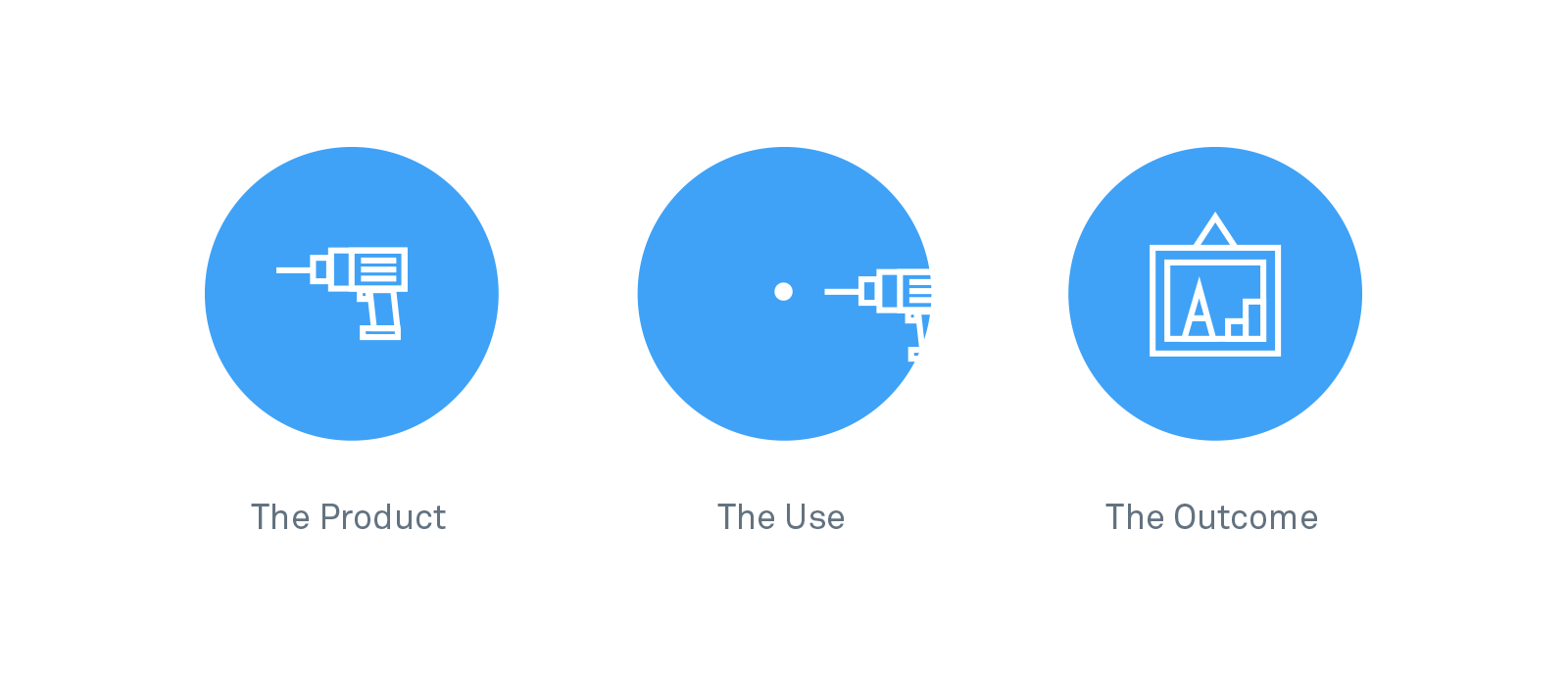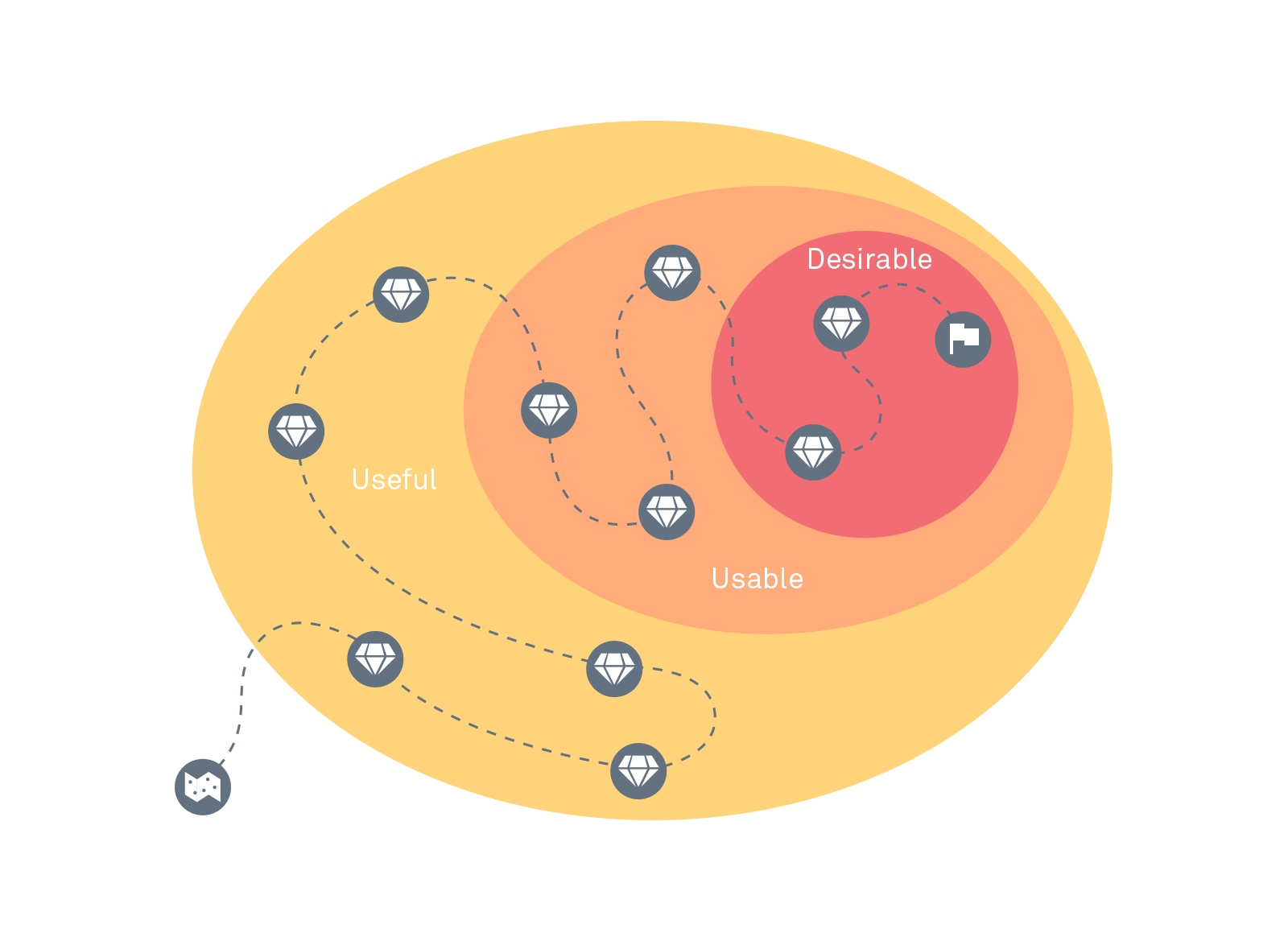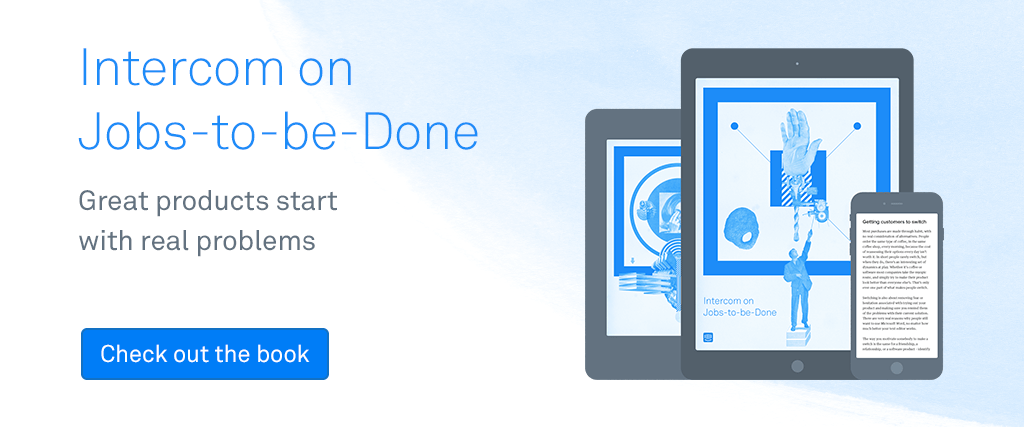
Is asking why always the best strategy?
Main illustration: Kim Salt
I’m not a yes-man by any stretch. But I will happily admit to being a why-man. For any given declarative statement you might make, I can’t stop myself from asking “Why?”. And then I’ll ask “Why?” again.
It’s an occupational hazard.
So you bought an electric drill? Why? Oh, because you want to hang some framed photos. Why do you want to hang framed photos? Oh, to make your home more personal. Why is making your home feel more personal important to you?

This is the point when the person I’m questioning usually starts to back slowly away. It’s not an interrogation, where I’m trying to elicit a confession. It should be more of a conversation, where I’m trying to feel out all of the different layers of the job you’re trying to get done.
Because there’s such a thing as getting down to the root problem too quickly, particularly when it comes to product design. The value in figuring out the “Why?” behind things isn’t quite as much about the destination as it is about the journey.
This is especially true for your customer interviews. Slowing down, taking your time with each layer of the “Why?” conversation, exploring lots of different ideas together; it all makes your time together much more graceful, pleasant, and productive. And it usually yields far more interesting and usable insights, to boot.
The productive layers of the conversation
For any given behavior, you can dig as deep as you want. There are as many layers as you have time to discuss, each one relating to a deeper need. A deeper reason why.
But when you’re exploring the value of a product, there are only so many layers that are productive to discuss. Here are the layers I’ve found the most valuable and worth the time it takes to fully explore:
-
The immediate layer relates to usefulness. What do you actually do with the thing?
I use the drill to make holes. -
The secondary layer relates to usability. What result comes from using it?
I’ve made holes to hang photos. -
The tertiary layer relates to desirability. What’s different now that I’ve accomplished my goal?
I’ve hung photos and now have a more personal home.
Beyond these three layers, I’ve found it becomes far more difficult to really relate things back to the product. e.g. “Why do you want a more personal home?” is unlikely to lead to meaningful answers for a drill manufacturer.
You may still learn a lot about the person and what drives them, which could be valuable. For me, though, it’s too abstract and I can rarely make it immediately actionable.

The useful layer
In the electric drill example above, the initial response is that the person needs to make holes. If the outcome of using a drill is that you now have holes, you can dig into all of the possibilities to make the drill more useful.
Where will the holes be drilled? In concrete? Wood? Metal? What size of holes? Tiny holes to set smaller screws? Big holes for larger bolts?
How might that change the nature of the drill? Different power, torque, speed? Maybe speed settings? Different size drills? Changeable drill bits?
These are all great questions to flush out what exactly the drill should do and how to make it more useful. Unfortunately, it doesn’t reveal anything about how to make the drill easier to use.
The usable layer
The next layer of using the drill is to help someone hang their framed photos. If the outcome of using the drill is having framed photos on your wall, you can dig into a lot of possibilities of making the drill more usable.
What’s the behavior around hanging framed pictures? Are we only drilling a few holes every few weeks? Are people comfortable using a drill? Are they standing on chairs or other dubious household objects while drilling? Are they nervous about doing it wrong? If we were designing a drill that could only drill holes to hang pictures, how much better could it be?
How does this change the nature of the drill? Does it require smaller batteries since it’s not so frequently used? A smaller motor and housing to reduce the weight? More prescriptive settings for typical house walls to reduce anxiety?
These are all great questions that reveal what the person is doing with the drill and ways to make it more usable. Unfortunately, it still doesn’t reveal anything about how to make the drill more appealing.
The desirable layer
The next layer of using the drill is to make your home more personal. If the outcome of using your drill is that you have a more personal home, you can dig into a lot of possibilities for making the drill more desirable.
How important is it for the drill to be ready to go when you come home with your next framed picture? Where do you put the drill when you’re done? Is it in a place where others might see it?
How does this change the nature of the drill? Does it need a docking station so it’s easy to put away? Or should it be plugged into the wall so it’s always ready to go? Does it need to look good if it’s going to be on a desk or shelf somewhere?
All great questions that can make the drill feel as though it’s been designed specifically for you. You can imagine it fitting perfectly into your life and satisfying all of your home personalization needs.
Take your time, it’s totally worth it
When talking about the jobs a particular tool can do for a person, try not to rush to the ultimate, deepest answer. That isn’t always where the gold lies. Often, there isn’t just one root answer and even if there is, it may not be all that valuable on its own. Explore each layer thoroughly for the unique value it can provide. There’s so much to learn.
There’s nothing wrong with being a why-man like me. Just don’t let it prevent you from learning the important lessons along the way.
Daniel “Ritz” Ritzenthaler is a Senior Product Designer at Iora Health








